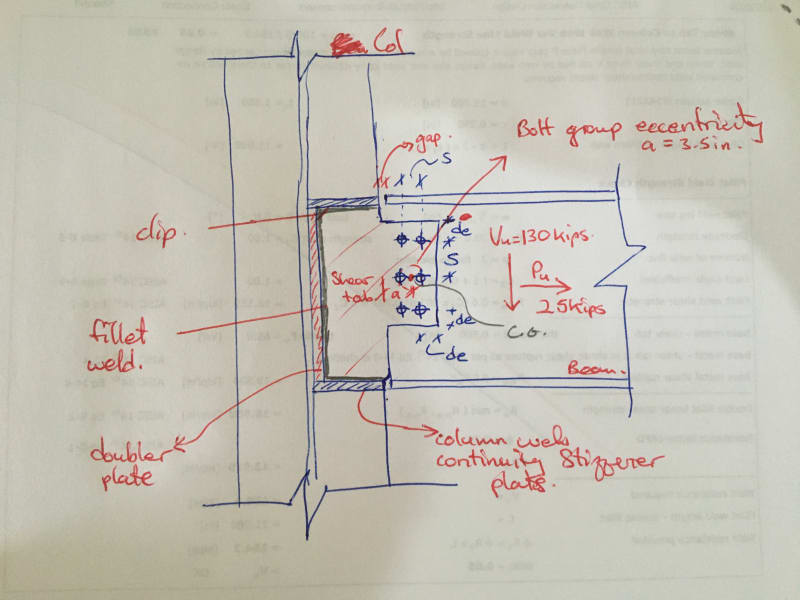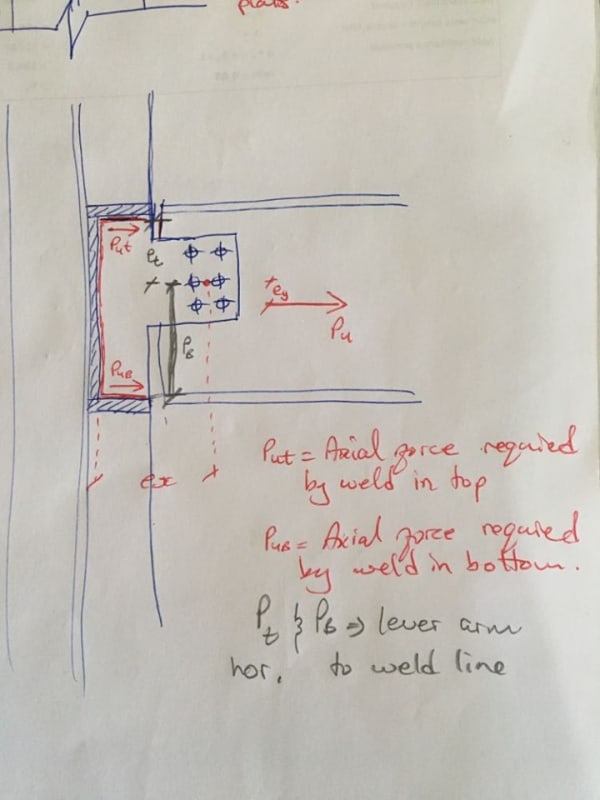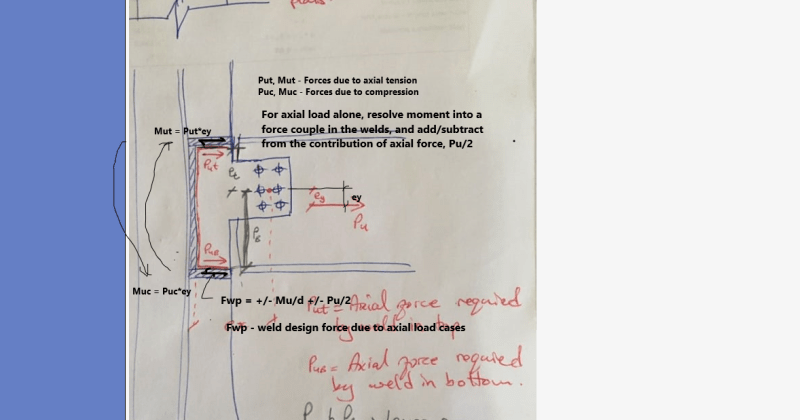Ganesh Persaud
Structural
hello everyone,
I have a stiffened extended shear plate to a column web connection. The beam is subjected to both shear and axial forces. The beam is also in tension. With respect to axial force, how do I calculate the axial force that would be distributed to the top and bottom flange weld (column continuity stiffener plates)? Since the beam is in tension, I know that there is a larger distribution to the bottom flange but how do I calc it? Any Ref?
Best Regards,
Ganesh Persaud
I have a stiffened extended shear plate to a column web connection. The beam is subjected to both shear and axial forces. The beam is also in tension. With respect to axial force, how do I calculate the axial force that would be distributed to the top and bottom flange weld (column continuity stiffener plates)? Since the beam is in tension, I know that there is a larger distribution to the bottom flange but how do I calc it? Any Ref?
Best Regards,
Ganesh Persaud




